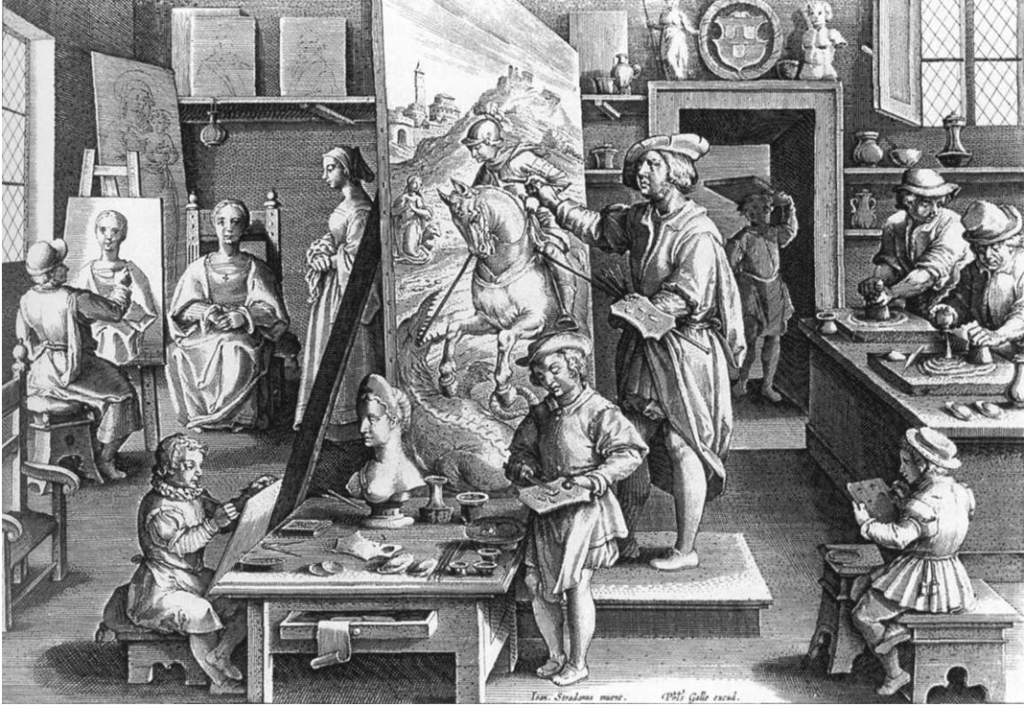 Eric Weiner’s book “The Geography of Genius” treks across the globe and back through time in search of explanations for why creative genius flourished in particular places and times. His study of Renaissance Florence seems of special interest given the author’s exploration of what role education did and did not play in a golden age.
Eric Weiner’s book “The Geography of Genius” treks across the globe and back through time in search of explanations for why creative genius flourished in particular places and times. His study of Renaissance Florence seems of special interest given the author’s exploration of what role education did and did not play in a golden age.
Medieval Florence was not an obvious launching spot for a reboot of civilization. It wasn’t the largest city in Italy, had no port, no prominent university. And, it had been ravaged by the bubonic plague.
“Consider, again, the state of affairs in Florence at the dawn of the Renaissance,” Weiner writes. “The Church was weakened, not only financially but morally. The monks no longer had a monopoly on virtue. Nobody did. All the golden ages, as we’ve seen in Athens and Hangzhou, contain an element of free for all, a chink in time when the old order has crumbled and a new one is not yet cemented. It’s a jump ball, and that’s when creative genius thrives, when everything is up for grabs.”
If this doesn’t have a vaguely familiar ring to it, it probably should.
Our “old order” focused on fighting a global Cold War against the Soviet Union, a country that collapsed almost 30 years ago. The United States kept most of that order in place to secure oil supplies for years afterwards, but that is no longer necessary. The United States is now an oil exporter. The Baby Boom generation that came after the Second World War and dominated American life for decades now reaches retirement age at a rate of 10,000 per day. Accordingly, the old order is something that we neither need, want, nor can afford.
Oh, and now, like Florence, we have our own plague.
“Jump ball” and “up for grabs” seem to describe the current era spot on; an old order has passed, but it’s far from clear what comes next.
What did Florence have going for it? Capitalism, for starters. Florentines were very adept at making money. Florence had enough wealth not only to patronize the arts, but to do so aggressively. Weiner quotes a knowledgeable Italian source: “These people had more money than God. And when they already had the best of the best of the best, they wanted something else, so they sent people out to develop it.”
At the heart of Florentine human capital and artistic development was the bottega, or what we might describe as an artist’s workshop.
“The bottega was where the new techniques were tested, new art forms developed, and, crucially, new talent nurtured,” Weiner wrote.
These were loud, chaotic, messy places where people chiseled, painted and raised chickens and rabbits. Young apprentices flocked to them. These young apprentices worked for free, and to add insult to injury, often paid for the privilege of absorbing knowledge from such places. The likes of Michelangelo and Leonardo da Vinci, among many others, started at the bottom, cleaning up after the animals in Florence’s bottegas.
What might a modern equivalent look like today? Maybe something like this or this or maybe this.
Part of the pre-pandemic American order was a K-12 system featuring high-spending, regulatory capture, lots of worksheets and bullying. That system left a distressingly large percentage of students illiterate, and another large portion bored and unfilled. It was not exactly an incubator for genius.
How will the post-pandemic K-12 system change?
I’m not sure, but COVID-19 is simply the first rather than the last major challenge of this decade, and the future does feel like a jump ball. Something more diverse, less standardized, more pluralistic and more humane would be very welcome indeed.
In the words of da Vinci, “I love those who can smile in trouble, who can gather strength from distress, and grow brave by reflection. ‘Tis the business of little minds to shrink, but they whose heart is firm, and whose conscience approves their conduct, will pursue their principles unto death.”


